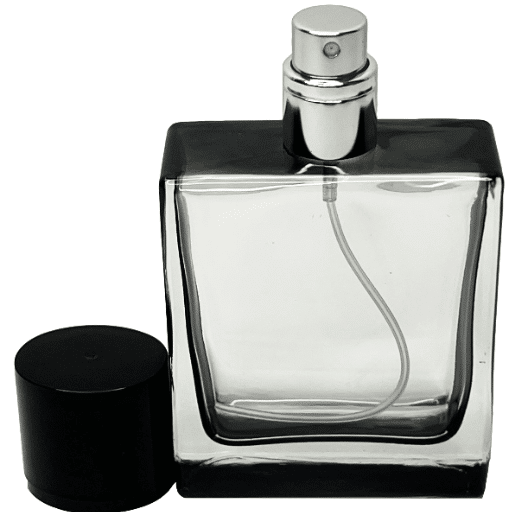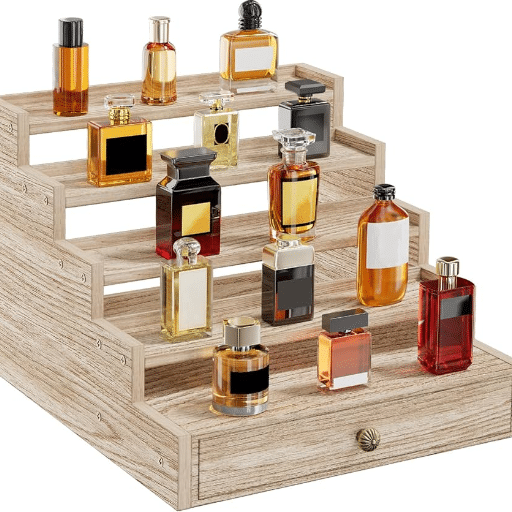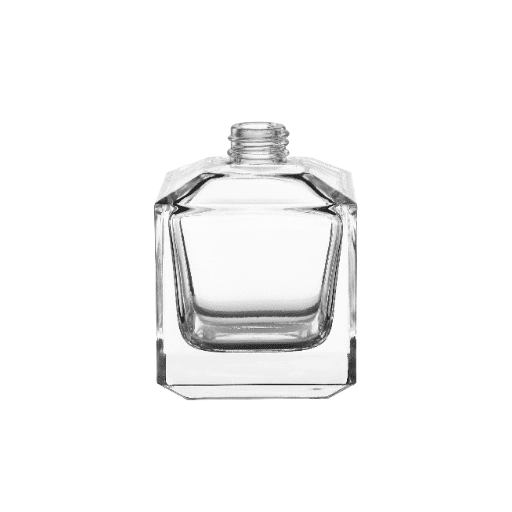Perfume bottles are more than just containers; they represent a fusion of artistry, functionality, and branding that has captivated industries and consumers alike. This guide dives deep into the world of wholesale perfume bottles, equipping you with comprehensive knowledge about their significance, types, manufacturing processes, and emerging trends. Whether you are a retailer, designer, or entrepreneur, understanding the nuances of wholesale perfume bottles can empower your decision-making and bolster your business strategy. From selecting the ideal materials to navigating suppliers and market demands, this blog post provides a detailed and authoritative roadmap to help you optimize your approach in this competitive field.
What Are the Different Types of Perfume Bottles Available?
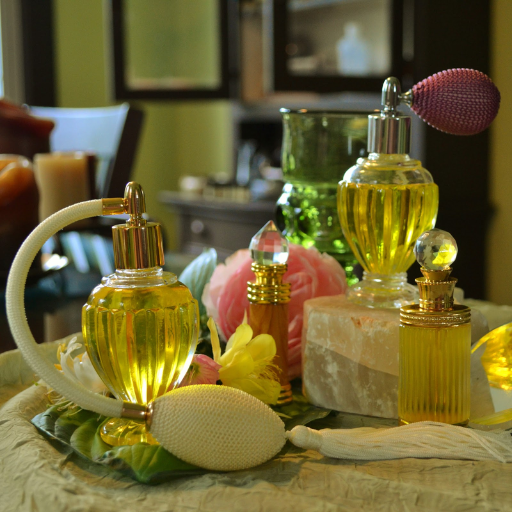
Perfume bottles are available in a diverse range of types, each designed to cater to different aesthetic, functional, and branding needs. Common options include glass bottles, which are highly popular due to their durability, clarity, and ability to preserve the fragrance. Plastic bottles, often lightweight and cost-effective, are a practical choice for economical or travel-friendly products. Additionally, metal bottles, such as those made from aluminum, provide exceptional protection against light exposure and are often used for niche or luxury fragrances. Beyond materials, bottle designs vary widely, encompassing spray bottles, which offer precision application, roll-on bottles, ideal for portable and personal use, and dabber bottles, often associated with traditional or artisanal perfumes. Each type serves a unique purpose, making it essential to align the bottle selection with the target audience and product positioning.
Exploring the Variety of Glass Perfume Bottles
Key Features and Applications of Glass Perfume Bottles
Glass perfume bottles are engineered to preserve fragrance integrity while offering aesthetic appeal. High-quality glass bottles are non-reactive, ensuring that the chemical composition of the perfume remains stable over time. This makes glass the preferred material for luxury and niche fragrances. Typically, there are several popular types of glass bottles, each tailored for specific uses:
- spray bottles: Designed for controlled diffusion, spray bottles are equipped with atomizers that produce a fine mist, ensuring even application. These are popular for modern mass-market and luxury perfumes.
- Roll-On Bottles: Compact and portable, roll-on bottles use a rollerball mechanism for precise and minimal application. They are ideal for travel-friendly and oil-based fragrances.
- Dabber Bottles: Often found in traditional, artisanal, or luxurious limited-edition perfumes, dabber bottles require manual application. These carry a vintage or bespoke appeal.
Customization also plays a key role in glass perfume bottle design. From frosted and colored glass to intricate engravings and unique shapes, brands utilize customization to differentiate products and align with specific branding strategies. Beyond aesthetics, UV-protective coatings can also be incorporated, helping to shield fragrances from light degradation and extending product shelf life. These features highlight the versatility and enduring appeal of glass as a material for perfume packaging.
Understanding the Role of Perfume Vials and Roll-Ons
Perfume vials and roll-ons serve distinct yet complementary purposes in the world of fragrance packaging. From my research, vials are primarily designed for sampling; their compact size makes them ideal for trial experiences without committing to a full-sized product. They cater to both consumers wanting a portable option and brands aiming to promote new scents effectively. On the other hand, roll-ons are perfect for targeted, on-the-go application due to their precision and mess-free design. Their practicality makes them a popular choice for touch-ups, especially when traveling or during daily commutes. Both formats are integral in enhancing user convenience and aligning with modern consumer preferences.
Choosing Between Spray Bottles and Roller Bottles
When deciding between spray bottles and roller bottles, the choice largely depends on the intended application and user preferences. Below are key technical parameters to consider for each format:
- Spray Bottles
-
- Dispersion: Designed for wide-area application, sprays create a fine mist ideal for fragrances and air fresheners.
- Volume Control: Precise dosing can be challenging; standard spray mechanisms release approximately 0.1 mL–0.2 mL per spray.
- Material Compatibility: Sprays often use misting heads that must resist corrosion from alcohol-based solutions.
- Portability: Bulkier than roll-ons, sprays may not always be travel-friendly.
- Roller Bottles
-
- Precision: Deliver product directly to the skin with minimal waste, ideal for concentrated formulations like essential oils.
- Material and Seal: Rollerballs (typically glass, steel, or plastic) must ensure a smooth application while preventing leakage.
- Volume Control: Allows users to apply small, measurable quantities effectively. Typical volume ranges from 5 mL–15 mL.
- Portability: Compact design makes this format excellent for travel or personal carrying.
By evaluating these parameters, the choice can be aligned with practical needs, ensuring optimal functionality and user satisfaction.
How to Choose the Right Perfume Bottle Supplier?
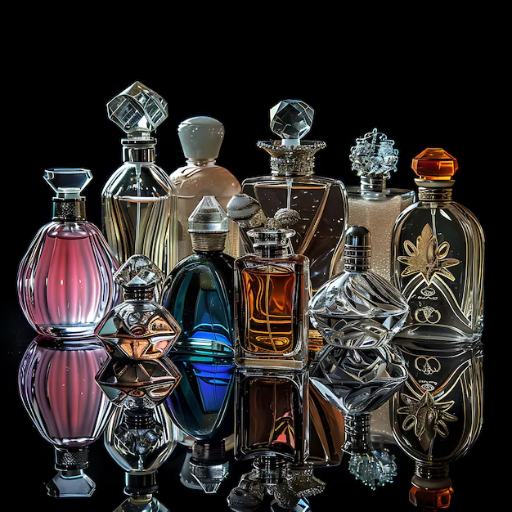
When selecting the right perfume bottle supplier, it is critical to consider several key factors to ensure reliability and quality. First, evaluate the supplier’s experience and expertise in the industry, as this directly impacts their ability to meet specific design and functionality requirements. Second, assess the material quality and range they provide, ensuring compatibility with your product’s formulation and target audience. Third, verify the supplier’s production capacity and lead times, particularly for large-scale orders, to avoid disruptions in your supply chain. Additionally, prioritize suppliers with consistent quality control measures to maintain product standards. Finally, consider the supplier’s customization capabilities and their willingness to collaborate on unique designs that enhance brand differentiation.
Evaluating Quality Control Measures
When assessing a supplier’s quality control measures, start by examining their certifications and whether they comply with internationally recognized standards, such as ISO 9001 for quality management systems. Ensure that their processes include clear documentation of inspection protocols, which should detail regular checks at key production stages, such as raw material intake, production, and final product verification. Ask for evidence of statistical process control (SPC) implementation, as this identifies variations in production and helps maintain consistent quality.
Additionally, review their testing methodologies for products. This may include tensile strength tests, chemical composition analysis, or environmental stress tests, depending on the product type. Verify whether their testing equipment is calibrated regularly according to standards like ISO/IEC 17025, which ensures lab competence. For technical products, parameters such as tolerance levels for part dimensions or acceptable failure rates should be clearly defined—e.g., ≤1% defect rate or ±0.01 mm dimensional tolerance.
Finally, consider the traceability systems in place; suppliers should use batch tracking and serialized labeling to identify and isolate defective products effectively. Supplier audits, including both scheduled and surprise inspections, should confirm these measures are consistently adhered to, ensuring product reliability and compliance with your specifications.
Assessing Customization Options for Perfume Packaging
Customization options for perfume packaging can be evaluated by considering materials, design flexibility, and print quality. Materials like glass or PET plastic should be selected for durability and visual appeal, with technical parameters such as a wall thickness of 1.5-2.5 mm for glass bottles to ensure structural integrity. Design flexibility involves choosing shapes, sizes, and closures that align with brand identity, including standard capacities like 30 ml, 50 ml, or 100 ml, which cater to consumer preferences. For labeling and printing, ensure technologies like UV printing or hot-stamping are available, with a resolution of 1200 DPI or higher for clear and detailed artwork. Additionally, confirm that suppliers offer Pantone color matching to maintain brand consistency. These steps ensure your perfume packaging meets both aesthetic and functional requirements.
Considering Suppliers in China for Cost Efficiency
When sourcing suppliers in China, focus on those with a strong track record in producing quality perfume packaging at competitive prices. Leading Chinese suppliers often provide flexible manufacturing capabilities to meet international standards, including ISO certifications and eco-friendly materials. Key considerations include their ability to handle diverse design requirements, such as custom molds and advanced printing techniques including UV printing, hot-stamping, and Pantone color matching.
For cost efficiency, request detailed pricing breakdowns, including production, material costs, and logistics. Many top suppliers support bulk orders to reduce unit costs while ensuring adherence to strict quality control processes. Additionally, confirm their lead times and shipping logistics to guarantee that production schedules align with your timelines.
Lastly, verify their communication capabilities—whether they can provide English-speaking representatives and prompt responses—to facilitate smooth collaboration across different time zones. By prioritizing these factors, businesses can secure reliable and cost-effective partnerships in China.
What Are the Benefits of Buying Wholesale Perfume Bottles?
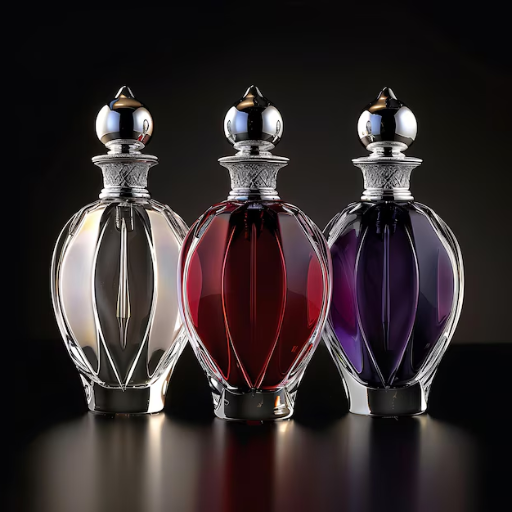
Buying wholesale perfume bottles offers several key advantages, primarily centered around cost savings, efficiency, and customization options. Purchasing in bulk allows businesses to significantly reduce the per-unit cost, improving overall profit margins. Additionally, wholesale suppliers often provide consistent inventory levels, ensuring streamlined production without the risk of delays caused by shortages. Many wholesale suppliers also offer customizable options, enabling brands to create unique designs that align with their branding strategies. Overall, wholesale procurement simplifies supply chains, enhances cost-effectiveness, and supports brand differentiation.
Cost Savings with Bulk Perfume Bottles
Purchasing bulk perfume bottles offers significant cost advantages for manufacturers and distributors. By acquiring large quantities, businesses can leverage economies of scale, resulting in reduced per-unit costs. Wholesale suppliers often pass on discounts to bulk buyers, typically ranging from 15% to 40%, depending on the order size and material type. Common materials for perfume bottles include glass, plastic, and aluminum, with glass being the most popular due to its durability and premium appearance. The average cost savings per glass bottle when bought in bulk can range from $0.10 to $0.50, depending on factors such as size, design complexity, and supplier.
Additionally, ordering in bulk minimizes logistics and transportation expenses by reducing the frequency of shipments. For example, consolidating a single bulk order can decrease shipping costs per unit by up to 30% compared to multiple smaller orders. This approach not only reduces operational expenses but also lowers environmental impact due to fewer deliveries. Customization options, such as bottle shape, color, and branding, can often be integrated into bulk orders at competitive rates, allowing businesses to maintain unique product differentiation without inflating costs.
Furthermore, bulk purchases ensure consistent inventory levels, reducing risks associated with supply chain disruptions. Standard capacities for perfume bottles range from 10ml to 100ml, with commonly used industrial grades of glass, such as Type III soda-lime glass or borosilicate glass, providing excellent resistance to chemical reactions with perfumes. These technical parameters ensure product integrity while maximizing cost efficiency for high-volume production setups.
Ensuring Steady Supply with Wholesale Glass
Ensuring a steady supply with wholesale glass requires careful planning and reliable sourcing strategies. From my research, securing wholesale glass often involves partnering with reputable suppliers who maintain consistent quality standards, such as offering durable options like Type III soda-lime or borosilicate glass. I prioritize vendors with efficient logistics networks to mitigate potential supply chain disruptions and maintain timely deliveries. Additionally, bulk purchasing agreements, inventory forecasting, and staying updated on market trends have helped optimize costs while ensuring uninterrupted access to materials aligned with production requirements.
Exploring Customization for Unique Brand Identity
Customization is fundamental in establishing a distinctive brand identity, particularly in competitive markets. By tailoring product packaging, designs, or specifications to align with brand values and consumer preferences, businesses can enhance recognition and customer loyalty. Research indicates that branded customization, such as logo placement, unique color schemes, or personalized messages, not only strengthens the visual appeal but also creates an emotional connection with customers.
To implement effective customization strategies, it is essential to leverage emerging technologies like digital printing, which allows for cost-effective, small-batch production tailored to specific requirements. Collaborations with manufacturers who offer flexible customization options enable businesses to adapt quickly to shifting market demands. Additionally, maintaining a balance between functionality and aesthetics ensures that the personalized elements of a product do not compromise its performance or practicality. This approach underscores the importance of crafting a brand narrative that resonates uniquely with the target audience.
How to Maintain the Quality of Perfume Bottles Wholesale?
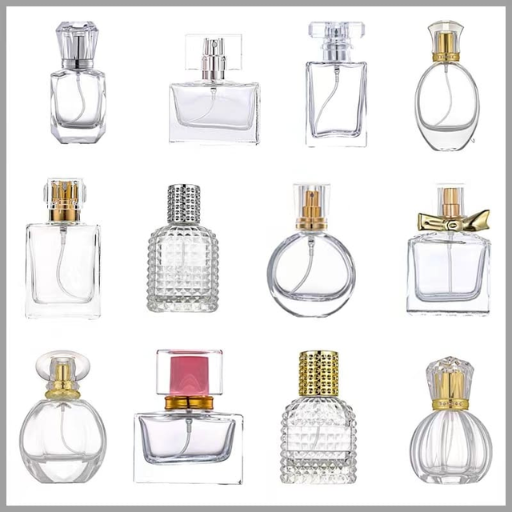
To maintain the quality of perfume bottles wholesale, it is crucial to implement stringent quality control measures at every stage of production and supply chain management. Inspect materials for defects prior to manufacturing to ensure structural integrity and durability. During storage and transportation, proper packaging should be used to prevent breakage or contamination, with attention to factors such as temperature and humidity control. Additionally, partnering with reliable suppliers who adhere to industry standards and certifications is essential to uphold consistent quality. Regular audits and feedback loops can further ensure that all processes meet desired specifications.
Understanding the Importance of High-Quality Materials
Ensuring the use of high-quality materials is crucial to maintaining the integrity and performance of the final product. When sourcing materials, I prioritize suppliers who demonstrate compliance with industry standards and possess relevant certifications. I also emphasize strict storage and transportation protocols, such as controlling temperature and humidity, to prevent any degradation or contamination. To maintain consistent quality, I conduct regular evaluations, including audits and supplier performance reviews, while encouraging feedback to refine processes. By adhering to these practices, I consistently achieve reliable and superior material performance in my projects.
Best Practices for Perfume Storage and Handling
To ensure the longevity and integrity of perfumes, the following best practices for storage and handling should be observed:
- Temperature Control: Perfumes are sensitive to temperature fluctuations. Store them in an environment between 15°C and 25°C (59°F to 77°F) to prevent chemical degradation or evaporation. Avoid exposing them to extreme heat or cold, which can alter their composition.
- Light Protection: Direct sunlight and UV exposure can break down the fragile molecules in perfumes. Store bottles in a dark or opaque container or keep them in a drawer or cabinet away from light sources.
- Humidity Management: Excessive humidity can compromise perfume stability. Maintain storage conditions at a relative humidity level below 60% to minimize the risk of bottle labels or seals deteriorating over time.
- Sealing and Closure: Always ensure that the perfume bottle is tightly sealed after use to prevent oxidation, evaporation, and contamination. Exposure to air can alter the fragrance and reduce its shelf life.
- Proper Placement: Avoid storing perfume in areas prone to environmental fluctuations, such as bathrooms, where heat and humidity levels can vary significantly.
- Avoid Shaking: Refrain from shaking perfume bottles unnecessarily, as this can introduce air bubbles and accelerate oxidation processes.
- Material Compatibility: For large-scale storage or transportation, use containers made of chemically inert materials (e.g., glass or specific plastics approved for fragrance storage) to ensure no unwanted reactions occur.
By following these technical guidelines, perfumes can retain their intended scent profile and remain usable for an extended period.
Implementing Effective Packaging Solutions
Effective packaging solutions for perfumes are critical to maintaining their integrity and extending shelf life. Here are key considerations and technical parameters based on industry best practices:
- Barrier Properties: Select packaging materials with high barrier properties to minimize exposure to air, light, and moisture. Glass containers coated with UV-blocking agents or aluminum-lined materials are preferred for their superior resistance to external elements. For plastics, use polymers like polyethylene terephthalate (PET) or high-density polyethylene (HDPE) that are approved for fragrance storage.
- Sealable Closures: Use airtight and leak-proof closures such as crimp pumps or threaded caps with silicone gaskets to prevent evaporation and contamination. According to industry standards, closure systems should maintain a torque resistance of at least 0.5 Nm to ensure durability.
- Light Protection: Choose dark or opaque containers, such as amber or cobalt blue glass, to reduce UV light degradation. Testing with UV spectrophotometers confirms that these materials can block up to 99% of harmful radiation in the 280-400 nm range.
- Capacity and Headspace: For optimal long-term storage, minimize the headspace within the container to reduce air exposure. A recommended fill level is 85-90% of the container’s total volume to balance functionality with preservation.
- Temperature Resistance: Ensure that the packaging materials can withstand a temperature range of 5°C to 45°C without compromising structural integrity. Glass and high-quality plastics perform reliably under these conditions, maintaining stability during transportation or storage.
- Labeling Durability: Use labels with smudge-proof coatings and strong adhesives that adhere under varying environmental conditions. Thermal transfer printing or UV-varnished labels are ideal options for durability.
- Sustainability Considerations: Incorporate eco-friendly materials such as recycled glass or bioplastics to align with current environmental standards. Conduct lifecycle assessments (LCA) to ensure that the selected materials meet sustainability criteria without compromising product performance.
By adhering to these packaging guidelines and ensuring technical compliance, the stability, quality, and customer satisfaction of perfume products can be effectively enhanced throughout their lifecycle.
What Are the Latest Trends in Perfume Packaging?
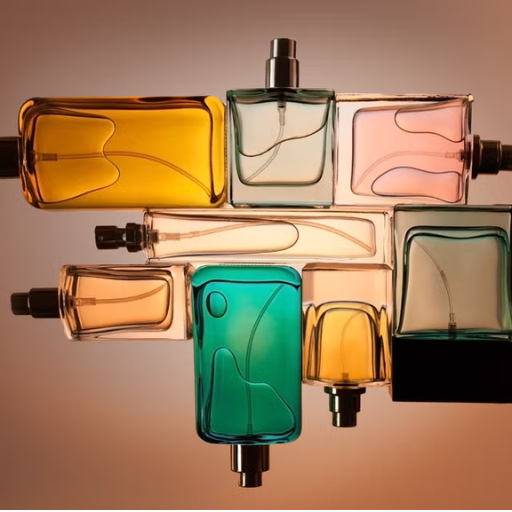
Emerging Trends in Perfume Packaging
The latest trends in perfume packaging focus heavily on sustainability, innovation, and personalization. Brands are increasingly adopting eco-friendly materials, such as biodegradable bioplastics, recycled paper, and glass, to reduce their environmental impact. Minimalist and refillable designs have gained traction, offering both aesthetic appeal and functionality. Advanced technologies, such as smart packaging with QR codes, are being utilized to enhance user interaction and provide product traceability. Additionally, customization is becoming more prominent, as consumers seek unique, tailored packaging that reflects their individuality and enhances the overall brand experience.
Innovations in Custom Glass Designs
Custom glass designs are advancing rapidly, driven by technologies like laser engraving and UV printing, which allow for precise and intricate detailing. Smart glass innovations, such as electrochromic or thermochromic materials, are enabling dynamic functionality, including privacy control and energy efficiency. Additionally, 3D glass-forming techniques now facilitate more complex, bespoke shapes, blending aesthetics with practicality. These advancements ensure personalized glass solutions that cater to both design preferences and functional needs.
The Rise of Eco-Friendly Perfume Bottles
Sustainable perfume production is increasingly prioritizing eco-friendly bottle design to reduce environmental impact. Modern eco-friendly perfume bottles often utilize recycled glass or biodegradable materials to minimize waste. Additionally, refillable designs are becoming standard, significantly extending the lifecycle of a bottle and reducing single-use packaging. These innovations align with technical parameters such as material durability, recyclability, and compatibility with liquid contents to ensure both sustainability and product integrity. By focusing on these aspects, the industry addresses environmental challenges while maintaining high-quality standards for consumers.
Trends in Luxury Perfume Packaging
Luxury perfume packaging continues to evolve, influenced by sustainability, consumer preferences, and innovative manufacturing techniques. Key trends include:
- Sustainability and Eco-Friendly Designs
With growing awareness of environmental impact, luxury brands are adopting sustainable packaging solutions. This includes the use of renewable materials such as recycled glass, biodegradable polymers, and FSC-certified paper for external boxes. Technical parameters include the recyclability ratio of materials (ideally above 85%), the use of water-based or plant-based inks, and carbon footprint reduction in production processes.
- Customization and Personalization
Personalized packaging is a rising trend where consumers can engrave their names, choose custom colors, or design unique bottle shapes. This trend involves advanced laser engraving techniques, UV printing, and small-batch production flexibility. Materials used in personalized designs need to meet durability and aesthetic standards to ensure the finished product remains premium.
- Innovative and Refillable Packaging
To enhance sustainability and consumer convenience, luxury brands are investing in sophisticated refillable designs. These systems reduce waste by allowing consumers to reuse their bottles while purchasing fragrance refills. A common technical parameter involves the use of corrosion-resistant materials for nozzles and seals (e.g., high-grade stainless steel or specialized polymers) to prevent degradation from prolonged exposure to fragrance oils.
- Visually Striking and Functional Design
Standout designs that balance visual appeal with functionality are indispensable in luxury packaging. Multi-faceted bottles, metallic finishes, and tactile textures are increasingly popular. Technically, this requires precision manufacturing, such as 3D glass shaping and advanced coating technologies like vacuum metallization, to achieve luxurious aesthetics.
These trends reflect an intersection of artistry, innovation, and environmental responsibility, showing how the luxury perfume industry is addressing consumer demands and global sustainability challenges.
Reference Sources
-
Future Market Insights: Perfume Bottle Market Size, Share & Outlook 2024-2034 – Provides insights into market growth trends and projections.
-
Fortune Business Insights: Perfumery Glass Bottle Market Size, Growth, Report, 2032 – Offers detailed data on the global perfumery glass bottle market.
-
Mordor Intelligence: Cosmetic Perfumery Glass Bottle Packaging Market Size – Discusses market size, growth rates, and future forecasts.
-
Glassourcing: The Ultimate Guide About How To Wholesale Glass Perfume Bottles – A practical guide for starting and managing a wholesale perfume bottle business.
-
Erbatur Glass: Perfume Bottle, Bulk, Perfume Bottle Wholesale – Highlights the design and quality aspects of wholesale perfume bottles.
Frequently Asked Questions (FAQs)
Q: What are the benefits of purchasing wholesale glass perfume bottles?
A: Buying wholesale glass perfume bottles offers cost savings, a wide selection, and the ability to choose from various sizes and styles, including innovative designs. This is ideal for businesses needing a large number of bottles for perfumes and essential oils.
Q: How do I choose the right perfume bottle manufacturer?
A: To select a trusted perfume bottle manufacturer, look for one with a large selection of bottles, in-stock options, and a reputation for high-quality, clear glass and innovative designs. Verify their ability to provide custom perfume bottles if needed.
Q: What types of caps are available for perfume bottles?
A: Caps for perfume bottles can vary from standard caps to more advanced options like sprayers, fine mist, and steel roller tops. Each cap type offers different functionalities depending on the perfume spray or application method desired.
Q: Can I get custom designs for my glass perfume bottles?
A: Yes, many manufacturers offer custom perfume bottles with options to create unique styles and designs, including refillable glass and clear glass options, to match your brand’s identity.
Q: What is the difference between fine mist sprayers and droppers?
A: Fine mist sprayers provide a light, even distribution of perfume, ideal for fragrances. Droppers are used for more controlled application, often with perfumes and essential oils that require precise dosing.
Q: Are there eco-friendly options available for perfume bottles?
A: Yes, eco-friendly options include refillable glass bottles and use of materials like clear glass, which are recyclable and can be reused, reducing environmental impact.
Q: What size options are typically available for wholesale perfume bottles?
A: Wholesale perfume bottles come in a range of sizes, from small perfume bottles of 10ml to larger ones like 50ml. This variety allows businesses to cater to different customer needs and preferences.
Q: How can I ensure the quality of empty glass perfume bottles?
A: Ensure quality by sourcing from reputable suppliers known for premium perfume bottles and containers. Look for clear glass bottles with sturdy construction and high-end finishes.
Q: What should I consider when selecting a sprayer for my perfume bottles?
A: When selecting a sprayer, consider the type of fragrance, desired spray strength, and compatibility with the bottle. Options include standard sprayers, fine mist, and innovative sprayer designs.
Q: Are there specific designs tailored for travel-sized perfumes?
A: Yes, travel-sized perfumes often use style bottles such as roll-on or small sprayers that are compact and convenient for portability. These are available through glass perfume bottles wholesale suppliers.

